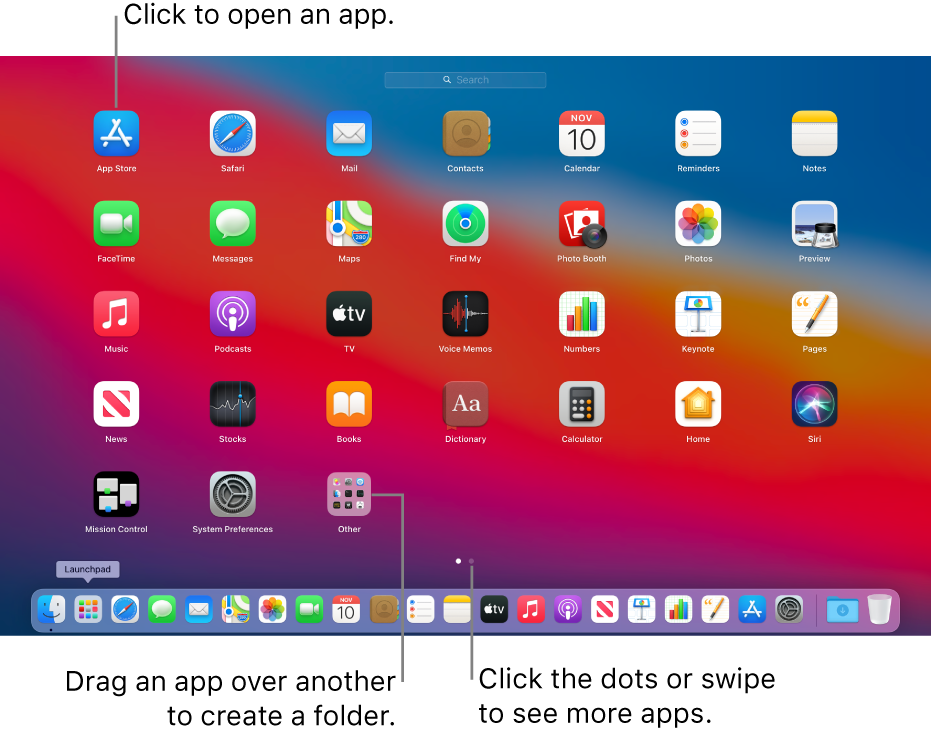

If you are looking for a solution better suited to portable Macs like MacBooks, MacBook Airs, and MacBook Pros please see the advanced configuration section below.

iMacs, Mac Pros, and Mac Minis that are primarily stationary.
#MAC RESTART LAUNCHPAD MAC OS#
Please note: Before rolling out your PCClient.app launchd plist it is highly recommended that you test it on either a Mac OS VM, a dedicated testing workstation, or the Mac of a user who is a willing guinea pig.Īlso, the supplied launchd plist is best suited for Macs that do not leave your network, i.e. For an in-depth guide to launchd and how it operates you may wish to peruse which is a human-readable guide for writing, configuring, and maintaining launchd guides. Apple also recommends using this method as opposed to using a login hook, as described on their Apple Developer website. Type (or copy and paste) the following command into Terminal: rm /Library/Application\ Support/Dock/.db killall Dock rm /Library/Application\ Support/Dock/.db. We highly recommend using the Launch Agent method described below. If the method above didn’t work, here’s how you can reset Launchpad on Mac using the Terminal app: Open the Terminal app on your Mac. Log back in your macOS Launchpad icons should still be in the same position. I am going to emphasize, Log out don’t shut down, restart, or sleep. As Apple has begun to focus heavily on securing root access to systems Login Hooks have been deprecated in favor of LaunchDaemons and LaunchAgents and have safer, less wide-reaching system access. On the restart, login and rearrange your macOS Launchpad App icons to your desired preference (order, folders, etc.) Log out of your account. The sudo command asks for the current user password to get root privileges.For Macintosh computers running OS X 10.7 and later, and most especially macOS X 10.10 Yosemite and later, launchd is the most practical approach to launching the PCClient.app. The sudo is used to run the reboot command with root or Administrator privileges. First, we open the terminal via the Launchpad. The reboot command is used to restart the system. Tap Enter and the Launchpad will be reset. Open Terminal and run the following command.
#MAC RESTART LAUNCHPAD PRO#
CONTROL+COMMAND+POWER CONTROL+EJECT CONTROL+OPTIO+COMMAND+POWER Restart MacBook Pro via Terminal (Command Line Interface)Īnother way to restart MacBook Pro is using the command line interface or terminal. What you will lose is the layout of the Launchpad i.e., folders you’ve created etc.

Different versions of the MacBook Pro provide different keyboard shortcuts. This can be especially useful if the GUI froze. Both the Dock and Launchpad will relaunch and that should clear up most minor issues with app persistence.

The keyboard shortcut is used open the restart dialog box where we can easily restart without navigating in the Apple Menu. Launchpad is attached to the Dock app, so the easiest way to relaunch LaunchPad is to kill the Dock from the command line: killall Dock. MacBook Pro also provides keyboard shortcuts in order to restart the system. You’ll want to use the Run Directly In choice instead of converting to a simple OS X application. Select Open With, choose Wine, and authorize the action. Restart MacBook Pro via Keyboard Shortcut If you use your Magic Mouse with a two-finger click, it’ll give you a set of menu options. When this option is selected after the restart and logging back currently opened windows are opened automatically. If there is a confirmation box like Are you sure you want to restart your computer now? Check the Reopen windows when logging back in.


 0 kommentar(er)
0 kommentar(er)
